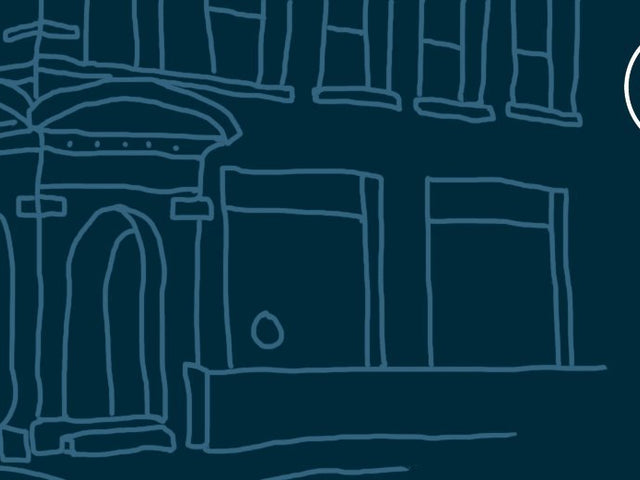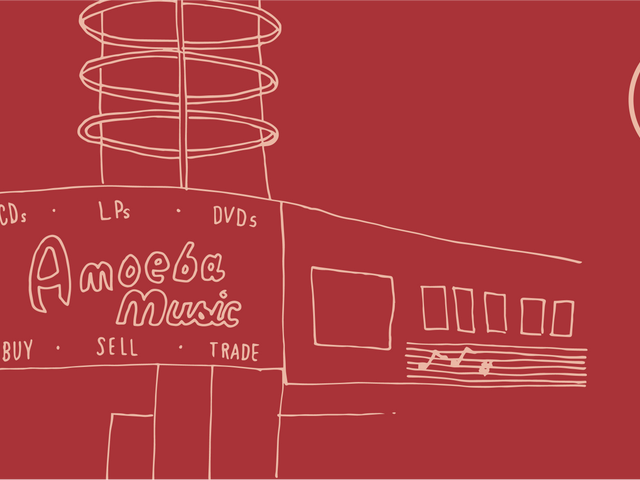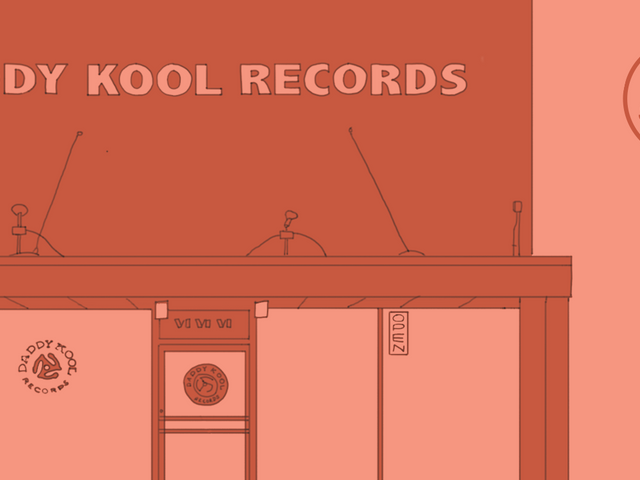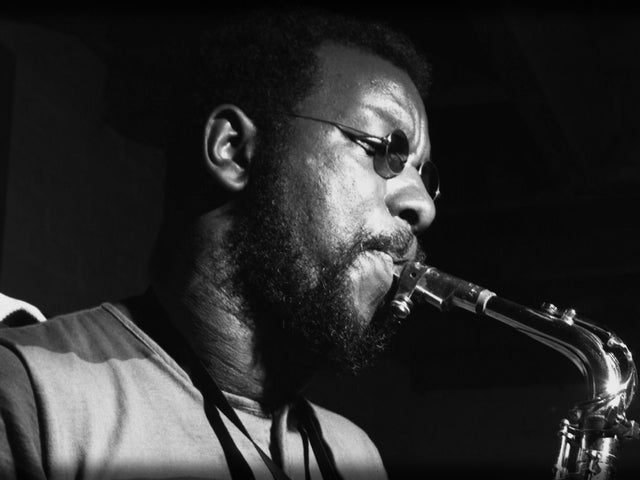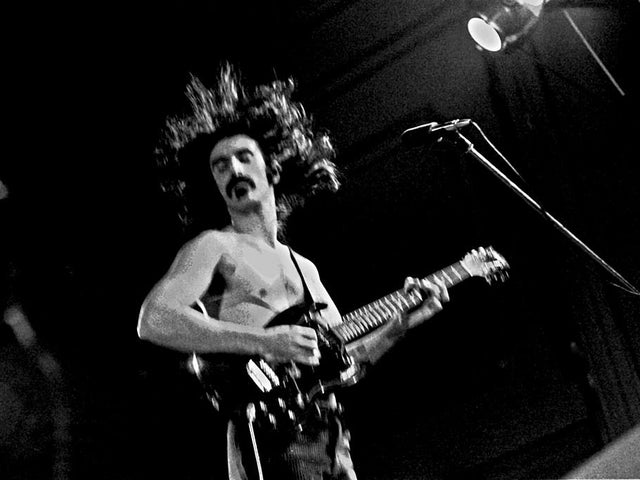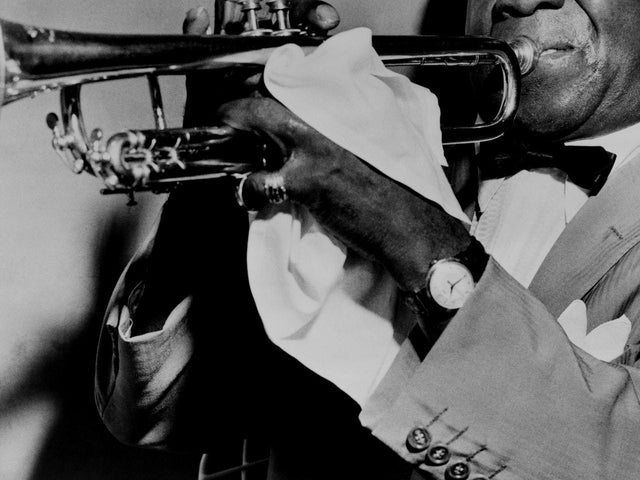On the day of the release of EARTH, a new Neil Young live album he says is full of soundscapes and a "giant radio show," we celebrate an underrepresented part of Young's oeuvre: his ability to make forward-looking, "difficult" albums.
Often when people are browsing through my record collection they will suddenly pause at the Neil Young section, turn towards me with a disapproving frown, and say something like, “Hey, where’s Harvest? Don’t you even have After The Gold Rush? And for the love of God why do you only own the all the terrible ones?” To which I reply, “Come on, man, haven’t you heard ‘Heart Of Gold’ enough times already? And they’re not the terrible ones. They’re the INTERESTING ones.” Then their frown will grow even frownier and they will promptly make their excuses and depart before I can drop the needle on a 28-minute song on which Young rants about the poor sound quality of an MP3 file.
Well they’re missing out. And so might you be. So here’s a handy primer to Neil Young’s weirder moments, divided into five helpful categories.
The Live Albums

Many ‘Best Live Albums’ listicles include a Neil Young recording, although it won’t always be the same one. Some folk rate the fragile nakedness of Unplugged. Others prefer the balls-swinging, Crazy Horse-backed distortion rock of Weld. Many plump for a compromise with half-acoustic, half-electric sets such as Rust Never Sleeps. Few best-of lists include Arc, however, because that one’s just too damn weird. Originally packaged with Weld as part of a limited 3CD set, Arc was later given a separate CD release but has sadly never been pressed onto vinyl. Feasibly an act of vengeance upon the Neil Young fans who proved so conservative as to boo Sonic Youth’s guitar scree when they opened for him on tour, Arc is a feedback-drenched collage of improvised noise made from spliced snippets of the intros and outros of live tracks. According to one outraged Amazon reviewer, Arc is “some kind of sick musical joke. It is even worse than [Lou Reed’s] Metal Machine Music. It may have been a freebie initially, but I paid for it and it sucks!” Personally, I’m with the ex-Teardrop Explodes acidhead Julian Cope, who called Arc one of his favorite ever Neil Young records. “First class guitar noise all the way,” he reckons.
No other Neil Young live recording is anywhere near as weird as Arc but some have their moments. His latest release, EARTH, is a 98-minute collection of environmentally-themed songs from across his career, performed live, and overdubbed with the sounds of bears, birds, bees, crickets, horses, cows and other sounds of the planet. As Neil explained when previewing the release at LA’s Natural History Museum, “The sounds of the animals [make] you feel good. They are all in the right key. They don’t clash with anything. They were perfectly in pitch.” Dr. Doolittle would approve.
Young’s ongoing “Archives” series of releases have also unearthed some gloriously weird moments, alongside more popularly palatable sets. The 1980s were an especially weird time for Young during which he flirted with such a plethora of different styles that he was sued by his own record company for not sounding enough like himself. There have only been a couple of 80s archive releases so far but we can only hope that there are more on the way because they are two of the most INTERESTING and DEFINITELY NOT TERRIBLE titles of the series. Featuring performances from his 1984-5 US tour, A Treasure has Young backed by professional Nashville musicians in pseudo-traditional pedal-steel country mode. In complete contrast, the 23-track Bluenote Café finds Young flirting with soul, funk and R&B with a full brass section in tow.
The Soundtracks
Ever one for confounding his audience’s expectations, Young followed his 1972 smash hit Harvest with the movie Journey Through The Past. It’s an experimental documentary that patches together backstage footage, live performances, television appearances, news footage and other strange clips into an abstract retrospective of Young’s career. Featuring performances by Buffalo Springfield, Crosby, Stills, Nash & Young and notable solo cuts including a rambling 16-minute rendition of Harvest’s “Words”, it also includes weird non-Young cuts such as The Tony & Susan Alamo Christian Foundation & Chorus performing part of Handel’s Messiah and a random Beach Boys instrumental, neither of which were excluded from the vinyl soundtrack release. Rolling Stone called the record “a depressing combination of sloppy music and verbal filler” and declared it “the nadir of Neil Young’s recording activity.” It was never released on CD.
Young’s next foray into the world of the soundtrack was an even scrappier affair. He provided the incidental music to Where The Buffalo Roam, the 1980 flick in which Bill Murray played the gun-totin’, drug-poppin’ gonzo author Hunter S. Thompson. Its soundtrack features classic tracks by Hendrix, Dylan and others but, in true gonzo spirit, Young’s seven contributions add up to less than 10 minutes of music and mainly consist of him playing creaky variations of “Home On The Range.”
Young’s film-score masterpiece would come fifteen years later with his collection of music from “and inspired by” Jim Jarmusch’s Dead Man. The album includes snippets of the film’s dialogue and its star, Johnny Depp, reading extracts of William Blake’s poetry. But Young is the true star of this disc, having improvised the music alone, using mainly his electric guitar, with occasional passages performed on acoustic guitar, pump organ or detuned piano. While unquestionably among Young’s weirdest ever moments, Dead Man is also one of his finest idiosyncratic achievements, on which he crafted a distinctly eerie atmosphere that invites parallels to ambient music, post-rock and the melancholic drone metal of groups such as Earth, yet all the while remaining definitively, unmistakably Neil.
The Concept Albums

Although some of Young’s earlier studio albums had vague overriding themes (i.e. drugs, death and darkness), on several more recent releases he has ambitiously embraced the idea of the concept album with unashamed gusto. This habit began with 2003’s Greendale a ten-track, 78-minute “rock opera” or “audio novel” about a family from the fictional town of Greendale, USA. Recorded with Crazy Horse (minus rhythm guitarist Frank Sampedro, for some weird reason), Greendale was another divisive record. The BBC’s reviews website condemned its songs as “a series of desultory, lengthy two-chord strums with nary a tune between them.” Elsewhere, an article in the New York Times likened the project to the innovative genius of the eighteenth-century satirist Laurence Sterne. To be honest, after 13 years of listening to Greendale, I still couldn’t accurately summarize its narrative but that doesn’t mean it isn’t extraordinary; I also enjoyed Sterne’s Tristram Shandy without understanding half of what was going on there either.
Three years after Greendale came Living With War. It contained what Neil described as “metal folk protest music” written in reaction to the presidency of George W. Bush and the Iraq War. More urgent yet also more melodic than Greendale, and with lyrics about oil, flags, violence, power, dead soldiers and lying leaders, on Living With War the heavy hippy sounded more fired up than he had in years.
Clearly the concept album had reignited Young’s mojo and another three years later he was at it again with Fork In The Road. Just like his buddy Bruce Springsteen, Young is smitten with cars and the freedom they can represent. As an eternal hippy, he’s also concerned by what mankind is doing to Mother Earth, so here he dedicated an album to proselytising about his 1959 Lincoln Continental that’s been specially converted to run on alternative energy. The album’s not just about his electric car prototype, though; its lyrics also touch on American history, dodgy governments, capitalism, climate change and global economic crises. Again, Fork In The Road was recorded very quickly, a practice which reaps both pros and cons. On the downside are some of the clunky, dashed-off lyrics about gettin’ behind the wheel, hittin’ the road and fillin’ ’er up. Like Living With War, however, Fork In The Road has a sprightly, carefree and bloody-minded immediacy as well as a nice fuzzy guitar tone throughout (the folksome “Light A Candle” is one exception). No doubt the album would have fared better commercially if only it had featured a sexy automobile on its cover, like ZZ Top’s Eliminator, Frank Ocean’s Nostalgia, Ultra or All The Right Reasons by Nickelback, instead of a frozen laptop-camera image of Young’s grumpy pink face.
Soon enough Young went all conceptual once more with 2015’s The Monsanto Years, this time defending the plight of the good ol’ American farmer while taking pot shots at agribusiness corporations, Safeway, Walmart, Starbucks, corrupt politicians and conservative lobbyists. For this outing he recruited Promise Of The Real, a band which takes its name from a line in Young’s “Walk On” and features two of Willie Nelson’s sons. It was recorded live-in-the-room and, although his backing musicians had received demos of Young’s songs for rehearsal purposes, co-producer John Hanlon asked them not to learn the tracks too well. “Neil doesn’t like it if it’s perfect,” Hanlon warned. As if to clarify that, Neil turned up on day one with a completely new song anyway and demanded they all perform that one first. Young got what he wanted: the result certainly wasn’t perfect, even if one reputable UK newspaper did award the album a rare 5-star review.
The Collaborations
The Monsanto Years wasn’t the first time that Young had collaborated on something weird. If you count his Crazy Horse records as collaborations, then you could add extra items to this list, including the mega-jamming, free-association double-epic Psychedelic Pill (2012) or its preceding sister album of cover versions, Americana. “Almost impossibly pointless,” said The Guardian of Americana; an overly harsh assessment of a delightfully ragged affair.
Long before that, there was 1995’s Mirror Ball. According to an NME feature, this was “an entire album about the nature of heroism” and, in the wake of Kurt Cobain’s suicide, “how we all feel the need for heroes and how they always let us down because they’re only human.” Still, it gave Pearl Jam the chance to play with their own hero, Neil Young, even if they were let down by the legal complications that prevented their band’s name from appearing on the album sleeve. In typical Young-in-weird-mood style, Mirror Ball was created quickly and impulsively, in just four days in fact, with Young writing most of its tracks during that time as well. It’s a muggy, thundering and free-wheelin’ affair, a little tuneless in places but rambunctious in spirit.
Pearl Jam’s producer Brendan O’Brien was enlisted for Mirror Ball, capturing that hard-rocking feel and contributing the odd bit of piano. Producers have played key roles in subsequent Neil Young weirdness as well. The title of 2010’s Le Noise was a play on the name of its producer, Daniel Lanois. Here, Lanois’ studio equipment was used to add all sorts of strange loops, effects and dub techniques to Neil’s guitar and vocals. It saw a welcome return to the sonic experimentation of Dead Man, this time coupled with traditional songwriting, and the result is definitely more exciting than being merely “like Crazy Horse without any drums”, as one of my ignorant pals once deemed it.
At the opposite end of the spectrum was A Letter Home, made using a refurbished 1947 Voice-o-Graph vinyl recording booth with the assistance of Jack White. A series of scratchy lo-fi covers of classic tracks by Bob Dylan, Willie Nelson, Bruce Springsteen and others, it may not be the weirdest item in the Neil Young back catalogue, though it does include several spoken-word passages in which Young speaks to his dead mother.
Weird Solo Albums

As mentioned earlier, Neil Young was at his most weirdly unhinged in the 1980s. The decade began with one of his shortest albums, Hawks & Doves, the second side of which featured weirdly straight-up, fiddle-heavy country songs with a touch of “ye-ha, ain’t America the greatest” patriotism (though Young himself is Canadian, of course). Then came his experiments with synthesizers, vocoders and New Wave rhythms. First up was Re-Ac-Tor which was an essentially rocky affair recorded with Crazy Horse, including a track on which Young repeated the lyrics “Got mashed potatoes / Ain’t got no T-bone” for nine long minutes. Re-Ac-Tor’s synth-tinged “Opera Star” and its Talking Heads-ish “Rapid Transit” pointed in the direction of Young’s next solo album, 1982’s Trans, on which he fully embraced futuristic electronica. The record baffled many at the time but once you get over the shock of Neil Young playing Kraftwerk- and Devo-inspired synth pop (and admittedly, this can take years), there are some great tunes on Trans, particularly “Computer Age” (which was later covered by Sonic Youth) and the beautiful “Transformer Man”.
1986’s Landing On Water and 1987’s Life used modern synthesizer sounds in slightly subtler ways but between Trans and those two albums, Young also released the rockabilly record Everybody’s Rockin’ and the pure country outing Old Ways. Towards the end of the decade, before 1989’s “return to form” record Freedom, Young also squeezed in the funky R&B album This Note’s For You.
While reaching the peak of his stylistic schizophrenia in the 1980s, Young’s adoption of surprising approaches didn’t end there. For example, 2002’s Are You Passionate? had a soul influence assisted by the presence of Booker T & The MGs and 2014’s Storytone was recorded with a massive Hollywood orchestra, providing Disney-movie levels of glossy sentimentality.
So what manner of weirdness might Young embark on next? Personally, I’m holding out for a semi-live, multi-disc concept album recorded in the back of a green-fuel animal rescue truck with the Sun-Ra Arkestra who’ve been instructed to perform “cyber-skiffle” without any rehearsal, produced by the guy from The War On Drugs. Stranger things have happened. Wherever Young does go next, here’s hoping there’s plenty more life in the weird dog yet.
JR Moores es un escritor freelance ubicado en el norte de Inglaterra. Su trabajo ha aparecido en Noisey, Record Collector, Drowned In Sound, Bandcamp Daily, The Guardian y muchos otros, y actualmente es el columnista residente de psic-rock para The Quietus.
Related Articles
Únete al Club!
Únete ahora, desde 44 $15% de descuento exclusivo para profesores, estudiantes, miembros militares, profesionales de salud y primeros respondedores - ¡Verifícate!
